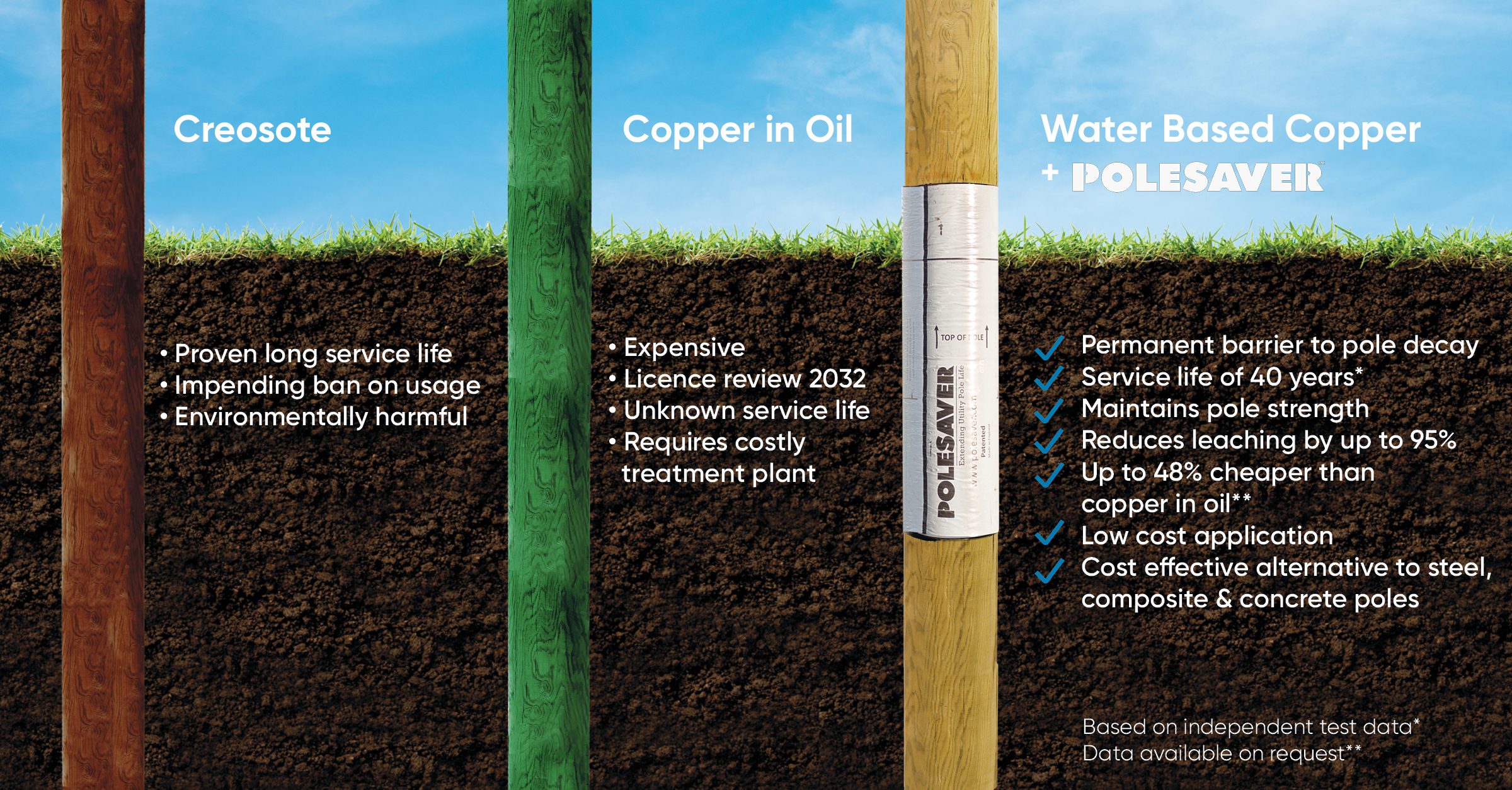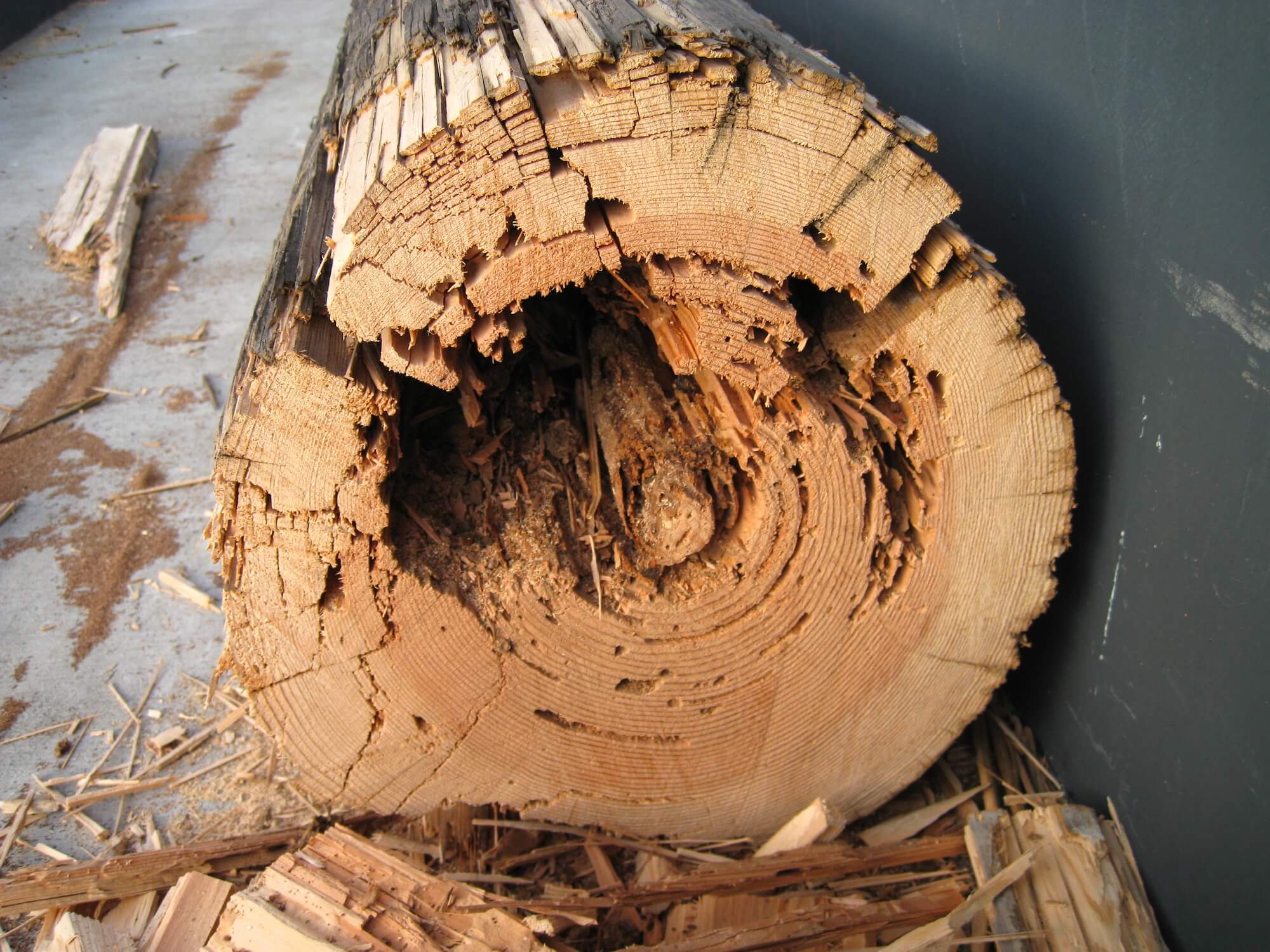Recent global geo-political events have led to an increase in material costs, and more frequent severe weather events are inflicting more damage than ever on infrastructure. Utilities are not only seeking materials which provide long-term guarantees for long-lifecycle assets, they’re also carefully weighing up the monetary and environmental cost of these.
The restrictions placed on the use of creosote and CCA in ground contact, has led chemical manufacturers to develop new preservatives. Copper in oil solutions may offer an enhanced desired service life over water based copper, but this extended lifespan comes with additional costs which are felt throughout the supply chain.
To treat poles with copper in oil preservatives, pole producers need to invest in expensive new treatment plants. Each treatment requires a larger volume of preservative, at a higher unit cost, than water based copper. These higher capital and operating costs must be passed on, leading to significantly higher prices for customers.
In the absence of a non-creosote preservative that provides similar performance at a similar cost, pole users need to look elsewhere for a solution. That solution comes in the form of an effective ground-line barrier sleeve which offers an affordable and long lifespan for wood used in ground contact.
Polesaver’s engineer designed Rot-Guard™, dual-layer, full barrier sleeve, protects the critical ground-line section of the pole against rot, by keeping out moisture and wood eating fungus, maintaining pole strength and extending service by 20 years. Rot-Guard™ sleeves are compatible with all wood and preservative types, but combining them with a water based copper preservative provides cost-effective superior protection, offering an initial saving of 23% and a lifetime cost saving of 48%, compared to copper in oil treated poles without sleeves.

Whist the changes in wood preservation have understandably caused concern among producers and utilities, when protected correctly, wood remains the most adaptable, mobile, cost-effective and eco-friendly pole material. In comparison to steel and concrete, wood offers the most environmentally sound option for production and longevity.
Contact Polesaver for an accurate and detailed cost calculation of how much your network could save.
Polesaver has been dedicated to extending the life of wooden poles for over 30 years, and is used in over 30 countries worldwide. Get in touch to speak to one of our team, or schedule a TEAMS call for you and your staff for more information.


